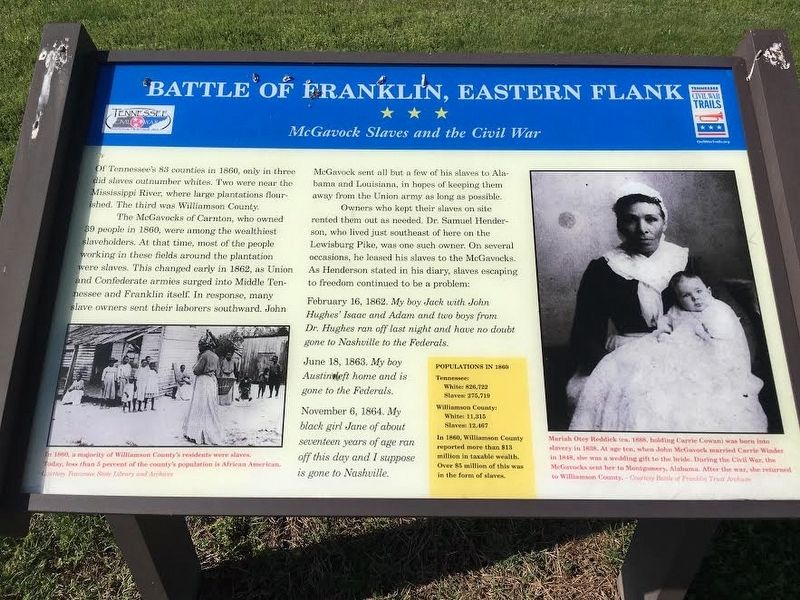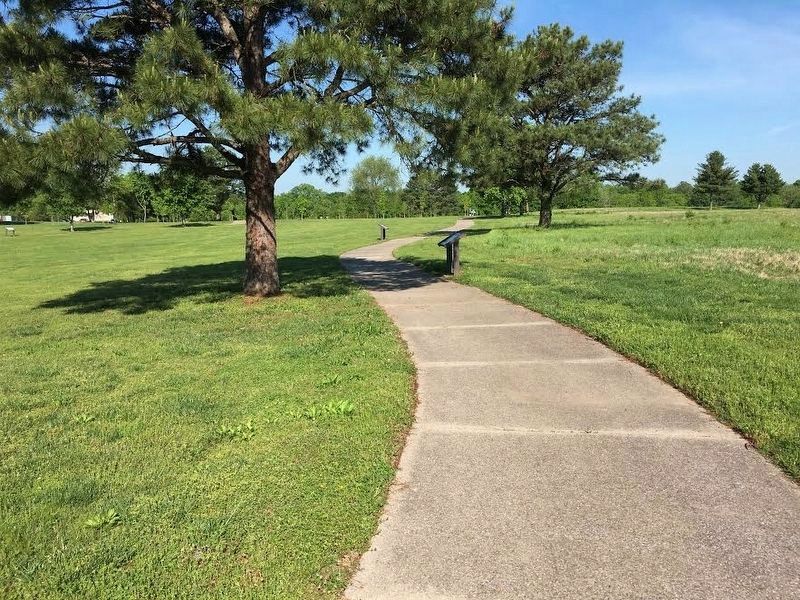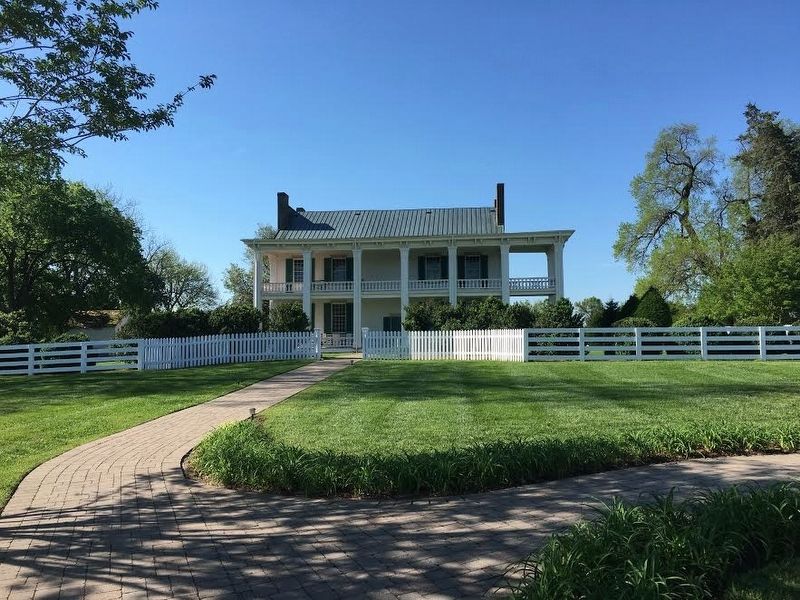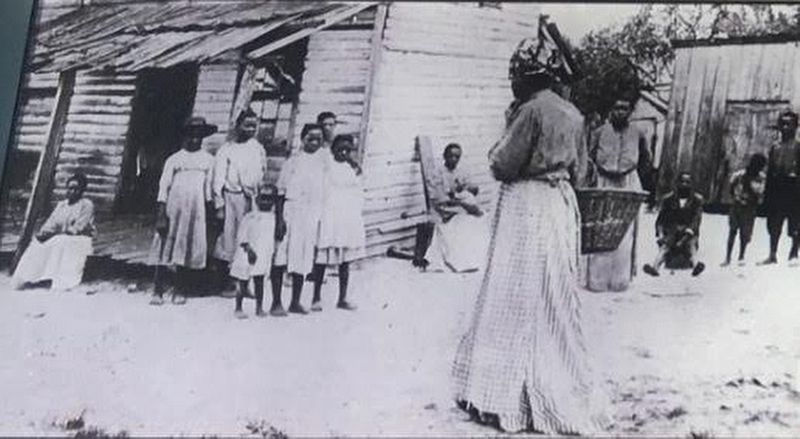Franklin in Williamson County, Tennessee — The American South (East South Central)
Battle of Franklin, Eastern Flank
McGavock Slaves and the Civil War
The McGavocks of Carnton, who owned 39 people in 1860, were among the wealthiest slaveholders. At the time, most of the people working in these fields around the plantation were slaves. This changed early in 1862, as Union and Confederate armies surged into Middle Tennessee and Franklin itself. In response, many slave owners sent their laborers southward. John McGavock sent all but a few of his slaves to Alabama and Louisiana, in hopes of keeping them away from the Union army as long as possible.
Owners who kept their slaves on site rented them out as needed. Dr. Samuel Henderson, who lived just southeast of here on the Lewisburg Pike, was one such owner. On several occasions, he leased his slaves to the McGavocks. As Henderson stated in his diary, slaves escaping to freedom continued to be a problem:
February 16, 1862. My boy Jack with John Hughes’ Isaac and Adam and two boys from Dr. Hughes ran off last night and have no doubt gone to Nashville to the Federals.
June 18, 1863. My boy Austin left home and is gone to the Federals.
November 6, 1864. My black girl Jane of about seventeen years of age ran off this day and I suppose is gone to Nashville.
(sidebar)
Population in 1860
Tennessee:
White: 826,722
Slaves: 275,719
Williamson County:
White: 11,315
Slaves: 12,467
In 1860, Williamson County reported more than $13 million in taxable wealth. Over $5 million of this was in the form of slaves.
Erected by Tennessee Civil War Trails.
Topics and series. This historical marker is listed in these topic lists: African Americans • War, US Civil. In addition, it is included in the Tennessee Civil War Trails series list. A significant historical date for this entry is February 16, 1862.
Location. 35° 54.347′ N, 86° 51.551′ W. Marker is in Franklin, Tennessee, in Williamson County. Marker can be reached from Eastern Flank Circle, 0.4 miles south of Lewsiburg Pike (Business U.S. 431), on the right when traveling west. Located in Eastern Flank Battlefield Park. Touch for map. Marker is at or near this postal address: 1368 Eastern Flank Cir, Franklin TN 37064, United States of America. Touch for directions.
Other nearby markers. At least 8 other markers are within walking distance of this marker. A different marker also named Battle of Franklin (within shouting distance of this marker); a different marker also named Battle of Franklin, Eastern Flank (within shouting distance of this marker); a different marker also named Battle of Franklin, Eastern Flank (within shouting distance of this marker); a different marker also named Battle of Franklin, Eastern Flank (about 300 feet away, measured in a direct line); a different marker also named Battle of Franklin (about 300 feet away); a different marker also named Battle of Franklin, Eastern Flank (about 300 feet away); a different marker also named Battle of Franklin, Eastern Flank (about 300 feet away); A Dream Postponed (about 300 feet away). Touch for a list and map of all markers in Franklin.
Also see . . . Carnton Plantation. (Submitted on May 25, 2017, by Brandon Stahl of Fairfax, Virginia.)
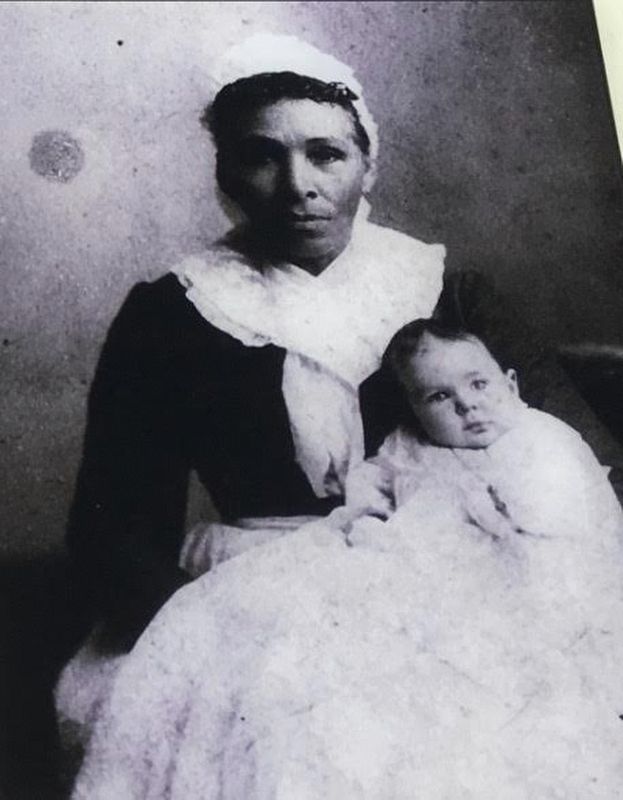
Battle of Franklin Trust Archives
3. Mariah Otey Reddick
Mariah Otey Reddick (ca 1888, holding Carrie Cowan) was born into slavery in 1838. At age ten, when John McGavock married Carrie Winder in 1848, she was a wedding gift to the bride. During the Civil War, the McGavocks sent her to Montgomery, Alabama. After the war, she returned to Williamson County.
Credits. This page was last revised on December 20, 2021. It was originally submitted on May 25, 2017, by Brandon Stahl of Fairfax, Virginia. This page has been viewed 392 times since then and 29 times this year. Last updated on December 20, 2021, by Bradley Owen of Morgantown, West Virginia. Photos: 1, 2, 3, 4, 5. submitted on May 25, 2017, by Brandon Stahl of Fairfax, Virginia. • Mark Hilton was the editor who published this page.
